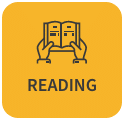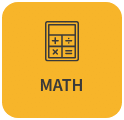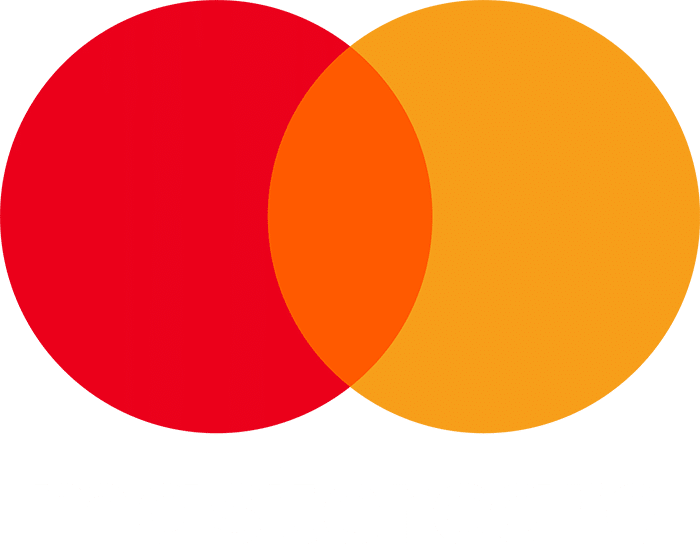- Ontario:
- Math
- Language Arts
- Social Studies
- Science
Ontario
Skills available for Ontario Grade 3 Math Curriculum (2020)
Expectations are in black and skills are in blue. Click on the name of the skill to practice that skill.
Please check back as we are always adding more content!
3.B Number
3.B1 Number Sense
Whole Numbers
3.B1.1 read, represent, compose, and decompose whole numbers up to and including 1000, using a variety of tools and strategies, and describe various ways they are used in everyday life
Digital Resources
Printable Worksheets
• Representing Numbers in Written Form
• Representing Numbers in Different Ways
• Representing Numbers in Different Ways – Set 2
• Decomposing Numbers – Activity 1
• Decomposing Numbers – Activity 2
• Decomposing Numbers – Activity 3
3.B1.2 compare and order whole numbers up to and including 1000, in various contexts
Digital Resources
• Compare Numbers Using a Place Value Chart
• Compare Numbers that Have the Same Units
• Compare Numbers that Have Related Units
• Order Numbers From Least to Greatest Using Place Value
• Order Numbers From Greatest to Least Using Place Value
• Order Numbers From Least to Greatest Using a Number Line
• Order Numbers From Greatest to Least Using a Number Line
Printable Worksheets
3.B1.3 round whole numbers to the nearest ten or hundred, in various contexts
Digital Resources
Printable Worksheets
• Rounding Numbers: Round Up or Leave the Same
• Rounding to the Nearest Ten and Hundred
3.B1.4 count to 1000, including by 50s, 100s, and 200s, using a variety of tools and strategies
Digital Resources
Printable Worksheets
3.B1.5 use place value when describing and representing multi-digit numbers in a variety of ways, including with base ten materials
Digital Resources
Printable Worksheets
• Counting Hundreds, Tens, and Ones – Activity 1
• Counting Hundreds, Tens, and Ones – Activity 2
• Counting Hundreds, Tens, and Ones – Activity 3
• Counting Hundreds, Tens, and Ones – Activity 4
Fractions
3.B1.6 use drawings to represent, solve, and compare the results of fair-share problems that involve sharing up to 20 items among 2, 3, 4, 5, 6, 8, and 10 sharers, including problems that result in whole numbers, mixed numbers, and fractional amounts
Digital Resources
• Represent Fractions on a Number Line
• Represent Fractions as Part of a Group
• Represent Fractions on a Fraction Bar Model
• Different Ways to Represent a Fraction
Printable Worksheets
• Fractions as Part of a Group
• Represent a Fraction on a Number Line
• Represent a Fraction on a Fraction Bar Model
3.B1.7 represent and solve fair-share problems that focus on determining and using equivalent fractions, including problems that involve halves, fourths, and eighths; thirds and sixths; and fifths and tenths
Digital Resources
Printable Worksheets
• Exploring Equivalent Fractions
3.B2 Operations
Properties and Relationships
3.B2.1 use the properties of operations, and the relationships between multiplication and division, to solve problems and check calculations
Math Facts
3.B2.2 recall and demonstrate multiplication facts of 2, 5, and 10, and related division facts
Digital Resources
Printable Worksheets
• Match Multiplication to Addition Facts for 2
Mental Math
3.B2.3 use mental math strategies, including estimation, to add and subtract whole numbers that add up to no more than 1000, and explain the strategies used
Digital Resources
Printable Worksheets
• Missing Numbers – Sums to 20
• Math Riddle – Addition Facts to 20
• Math Riddle – Addition Facts to 10
Addition and Subtraction
3.B2.4 demonstrate an understanding of algorithms for adding and subtracting whole numbers by making connections to and describing the way other tools and strategies are used to add and subtract
3.B2.5 represent and solve problems involving the addition and subtraction of whole numbers that add up to no more than 1000, using various tools and algorithms
Digital Resources
Printable Worksheets
Multiplication and Division
3.B2.6 represent the multiplication of numbers up to 10 × 10 and division up to 100 ÷ 10, using a variety of tools and drawings, including arrays
Digital Resources
• Multiplication Fact Practice
Printable Worksheets
• Math Riddle Multiplication Facts from 1 to 10
3.B2.7 represent and solve problems involving multiplication and division, including problems that involve groups of one half, one fourth, and one third, using tools and drawings
Digital Resources
Printable Worksheets
• Relate Multiplication to Division
• Word Problems – Multiplication/Division
• Use Related Multiplication Facts to Divide with 0 and 1
3.B2.8 represent the connection between the numerator of a fraction and the repeated addition of the unit fraction with the same denominator using various tools and drawings, and standard fractional notation
Digital Resources
Printable Worksheets
3.B2.9 use the ratios of 1 to 2, 1 to 5, and 1 to 10 to scale up numbers and to solve problems
Digital Resources
Printable Worksheets
3.C Algebra
3.C1 Patterns and Relationships
Patterns
3.C1.1 identify and describe repeating elements and operations in a variety of patterns, including patterns found in real-life contexts
3.C1.2 create and translate patterns that have repeating elements, movements, or operations using various representations, including shapes, numbers, and tables of values
3.C1.3 determine pattern rules and use them to extend patterns, make and justify predictions, and identify missing elements in patterns that have repeating elements, movements, or operations
Digital Resources
Printable Worksheets
• Exploring Growing Patterns – Set 2
• Exploring Shrinking Patterns
• Exploring Shrinking Patterns – Set 2
3.C1.4 create and describe patterns to illustrate relationships among whole numbers up to 1000
Digital Resources
Printable Worksheets
• Exploring Increasing Number Patterns
3.C2 Equations and Inequalities
Variables
3.C2.1 describe how variables are used, and use them in various contexts as appropriate
Digital Resources
Printable Worksheets
Equalities and Inequalities
3.C2.2 determine whether given sets of addition, subtraction, multiplication, and division expressions are equivalent or not
Digital Resources
Printable Worksheets
3.C2.3 identify and use equivalent relationships for whole numbers up to 1000, in various contexts
3.C3 Coding
Coding Skills
3.C3.1 solve problems and create computational representations of mathematical situations by writing and executing code, including code that involves sequential, concurrent, and repeating events
Digital Resources
Printable Worksheets
• Exploring Writing Code – Set 1
• Exploring Writing Code – Set 2
• Exploring Writing Code – Set 3
3.C3.2 read and alter existing code, including code that involves sequential, concurrent, and repeating events, and describe how changes to the code affect the outcomes
Digital Resources
Printable Worksheets
3.D Data
3.D1 Data Literacy
Data Collection and Organization
3.D1.1 sort sets of data about people or things according to two and three attributes, using tables and logic diagrams, including Venn, Carroll, and tree diagrams, as appropriate
Digital Resources
Printable Worksheets
3.D1.2 collect data through observations, experiments, and interviews to answer questions of interest that focus on qualitative and quantitative data, and organize the data using frequency tables
Data Visualization
3.D1.3 display sets of data, using many-to-one correspondence, in pictographs and bar graphs with proper sources, titles, and labels, and appropriate scales
Digital Resources
Printable Worksheets
• Favourite Recess Activities Graph
• Exploring Bar Graphs – Set 1
• Exploring Bar Graphs – Set 2
• Exploring Bar Graphs – Set 3
• Exploring Bar Graphs – Set 4
• Exploring Bar Graphs – Set 5
• Exploring Bar Graphs – Set 6
• Exploring Bar Graphs – Set 7
Data Analysis
3.D1.4 determine the mean and identify the mode(s), if any, for various data sets involving whole numbers, and explain what each of these measures indicates about the data
3.D1.5 analyse different sets of data presented in various ways, including in frequency tables and in graphs with different scales, by asking and answering questions about the data and drawing conclusions, then make convincing arguments and informed decisions
Digital Resources
Printable Worksheets
• Exploring Bar Graphs and Tally Charts
• Exploring Bar Graphs – Set 2
• Exploring Bar Graphs – Set 3
• Exploring Bar Graphs – Set 4
• Reading Tally Charts – Set 1
• Reading Tally Charts – Set 2
• Reading Tally Charts – Set 3
• Reading Tally Charts – Set 4
5.D2 Probability
Probability
3.D2.1 use mathematical language, including the terms “impossible”, “unlikely”, “equally likely”, “likely”, and “certain”, to describe the likelihood of events happening, and use that likelihood to make predictions and informed decisions
3.D2.2 make and test predictions about the likelihood that the mean and the mode(s) of a data set will be the same for data collected from different populations
3.E Spatial Sense
3.E1 Geometric and Spatial Reasoning
Geometric Reasoning
3.E1.1 sort, construct, and identify cubes, prisms, pyramids, cylinders, and cones by comparing their faces, edges, vertices, and angles
Digital Resources
Printable Worksheets
• 3D Objects: Edges and Vertices
• Sorting 2D Shapes and 3D Objects
• Sorting 3D Objects by Vertices
• Exploring Polygons – Activity 1
3.E1.2 compose and decompose various structures, and identify the two-dimensional shapes and three-dimensional objects that these structures contain
3.E1.3 identify congruent lengths, angles, and faces of three-dimensional objects by mentally and physically matching them, and determine if the objects are congruent
Digital Resources
Printable Worksheets
Location and Movement
3.E1.4 give and follow multistep instructions involving movement from one location to another, including distances and half- and quarter-turns
Digital Resources
• Translations, Reflections, and Rotations
Printable Worksheets
• Exploring Location and Movement
• Exploring Location and Movement – Set 2
• Describing Movement on a Grid – Activity 1
• Describing Movement on a Grid – Activity 2
• Reflections, Translations, and Rotations – Set 1
• Reflections, Translations, and Rotations – Set 1
• Transformations in Everyday Objects
3.E2 Measurement
Length, Mass and Capacity
3.E2.1 use appropriate units of length to estimate, measure, and compare the perimeters of polygons and curved shapes, and construct polygons with a given perimeter
Digital Resources
Printable Worksheets
• Exploring Perimeter – Activity 2
• Exploring Perimeter – Activity 3
• Measuring Perimeter – Activity 2
• Measuring Perimeter – Activity 3
• Finding the Perimeter: Polygons
• Comparing Perimeter: Figures
• Comparing Perimeter: Polygons
3.E2.2 explain the relationships between millimetres, centimetres, metres, and kilometres as metric units of length, and use benchmarks for these units to estimate lengths
Digital Resources
Printable Worksheets
• Units and Tools for Measurement
• Units and Tools for Measurement
3.E2.3 use non-standard units appropriately to estimate, measure, and compare capacity, and explain the effect that overfilling or underfilling, and gaps between units, have on accuracy
Digital Resources
Printable Worksheets
3.E2.4 compare, estimate, and measure the mass of various objects, using a pan balance and non-standard units
Digital Resources
Printable Worksheets
3.E2.5 use various units of different sizes to measure the same attribute of a given item, and demonstrate that even though using different-sized units produces a different count, the size of the attribute remains the same
Digital Resources
Printable Worksheets
Time
3.E2.6 use analog and digital clocks and timers to tell time in hours, minutes, and seconds
Digital Resources
Printable Worksheets
• Measuring the Passage of Time
• Telling Time on a Digital Clock
• Writing Time on a Digital Clock
Area
3.E2.7 compare the areas of two-dimensional shapes by matching, covering, or decomposing and recomposing the shapes, and demonstrate that different shapes can have the same area
3.E2.8 use appropriate non-standard units to measure area, and explain the effect that gaps and overlaps have on accuracy
Digital Resources
Printable Worksheets
3.E2.9 use square centimetres (cm2) and square metres (m2) to estimate, measure, and compare the areas of various two-dimensional shapes, including those with curved sides
3.F Financial Literacy
3.F1 Money and Finances
Money Concepts
3.F1.1 estimate and calculate the change required for various simple cash transactions involving whole-dollar amounts and amounts of less than one dollar
Digital Resources
Printable Worksheets
• Counting Canadian Money – Set 2
• Showing Money Amounts in Different Ways
• Comparing Canadian Money Values
• Matching Bills to Price Tags
• At the School Cafeteria – Set 1
• At the School Cafeteria – Set 2
• At the School Cafeteria – Set 3
• Getting to Know Coins – Set 1
• Getting to Know Coins – Set 2
• Getting to Know Coins – Set 3
• Getting to Know Coins – Set 4









